Abstract
The method previously developed by us for the pure-culture fermentation of brined cucumbers and other vegetables has been applied successfully to Manzanillo variety olives. Field-run grade fruit was processed first by conventional procedures to remove most of the bitterness. Then the relative abilities of Lactobacillus plantarum, L. brevis, Pediococcus cerevisiae, and Leuconostoc mesenteroides to become established and produce acid in both heat-shocked (74 C for 3 min) and unheated olives, brined at 4.7 to 5.9% NaCl (w/v basis), were evaluated. The heat-shock treatment not only proved effective in ridding the fruit of naturally occurring, interfering, and competitive microbial groups prior to brining and inoculation, but also made the olives highly fermentable with respect to growth and acid production by the introduced culture, particularly L. plantarum. Of the four species used as inocula, L. plantarum was by far the most vigorous in fermentation ability. It consistently produced the highest levels of brine acidity (1.0 to 1.2% calculated as lactic acid) and the lowest pH values (3.8 to 3.9) during the fermentation of heat-shocked olives. Also, L. plantarum completely dominated fermentations when used in two-species (with P. cerevisiae) and three-species (with P. cerevisiae and L. brevis) combinations as inocula. In contrast, when L. plantarum was inoculated into the brines of unheated olives it failed to become properly established; the same was true for the other species tested, but even to a more pronounced degree. L. brevis was the only species used that failed to develop in brines of both heat-shocked and unheated olives. Modification of the curing brine by the addition of lactic acid at the outset, either with or without dextrose, led to a much earlier onset of fermentation with accompanying acid development, as compared to treatments with dextrose alone or nonadditive controls. Reasons for the marked improvement of the fermentability of Manzanillo olives receiving the prebrining heat-shock treatment are discussed.
Full text
PDF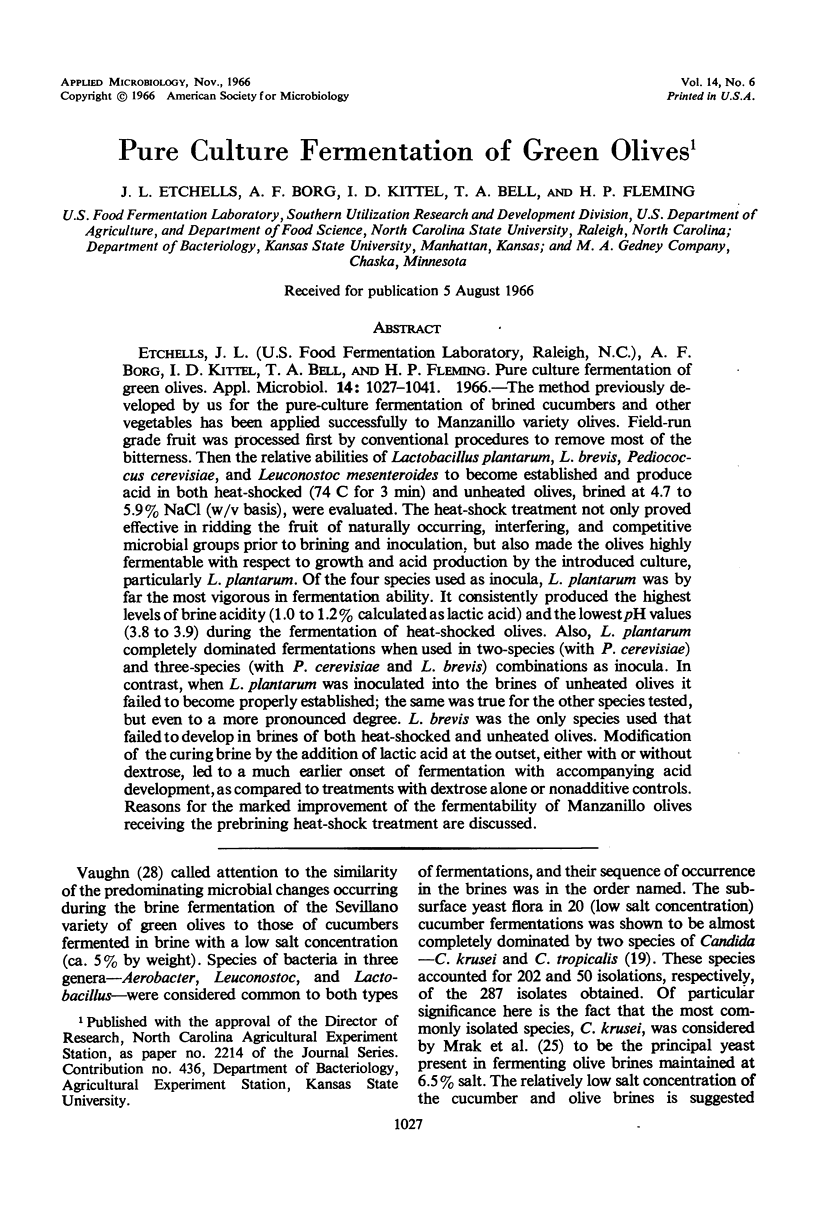
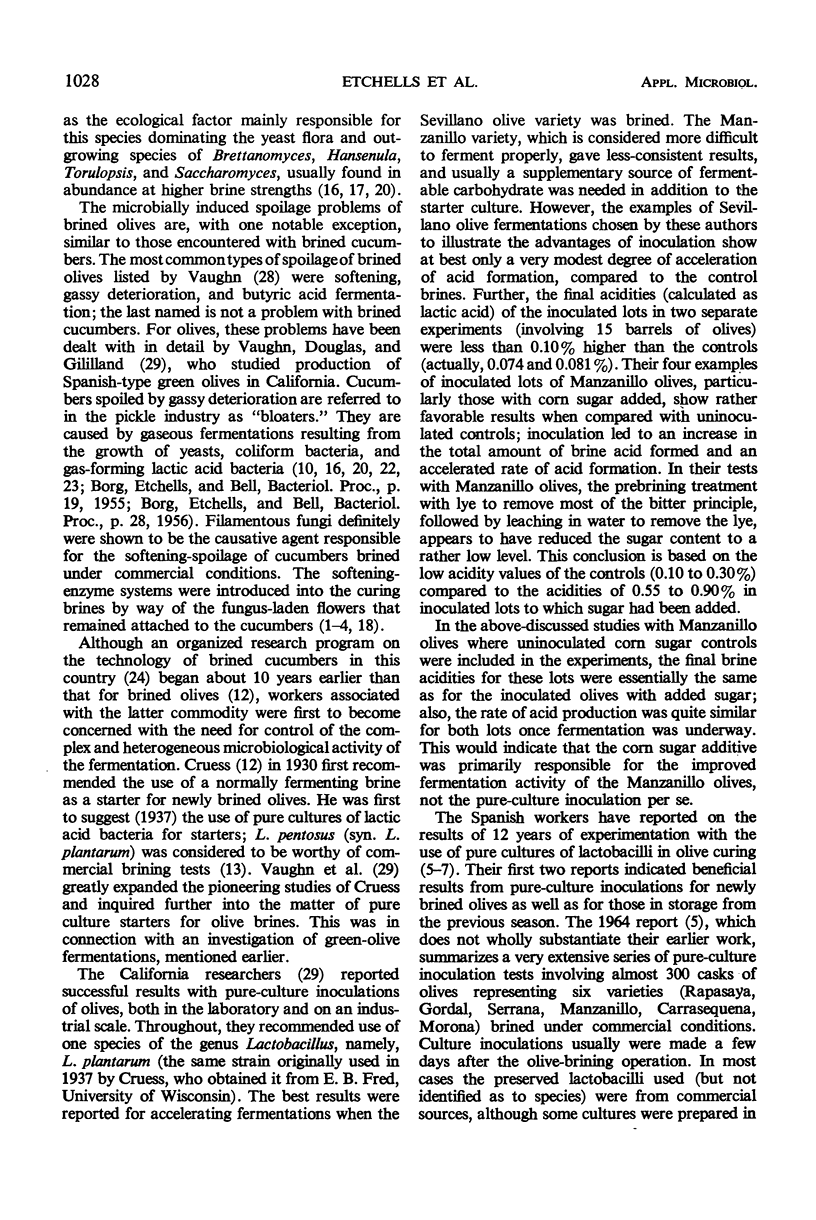
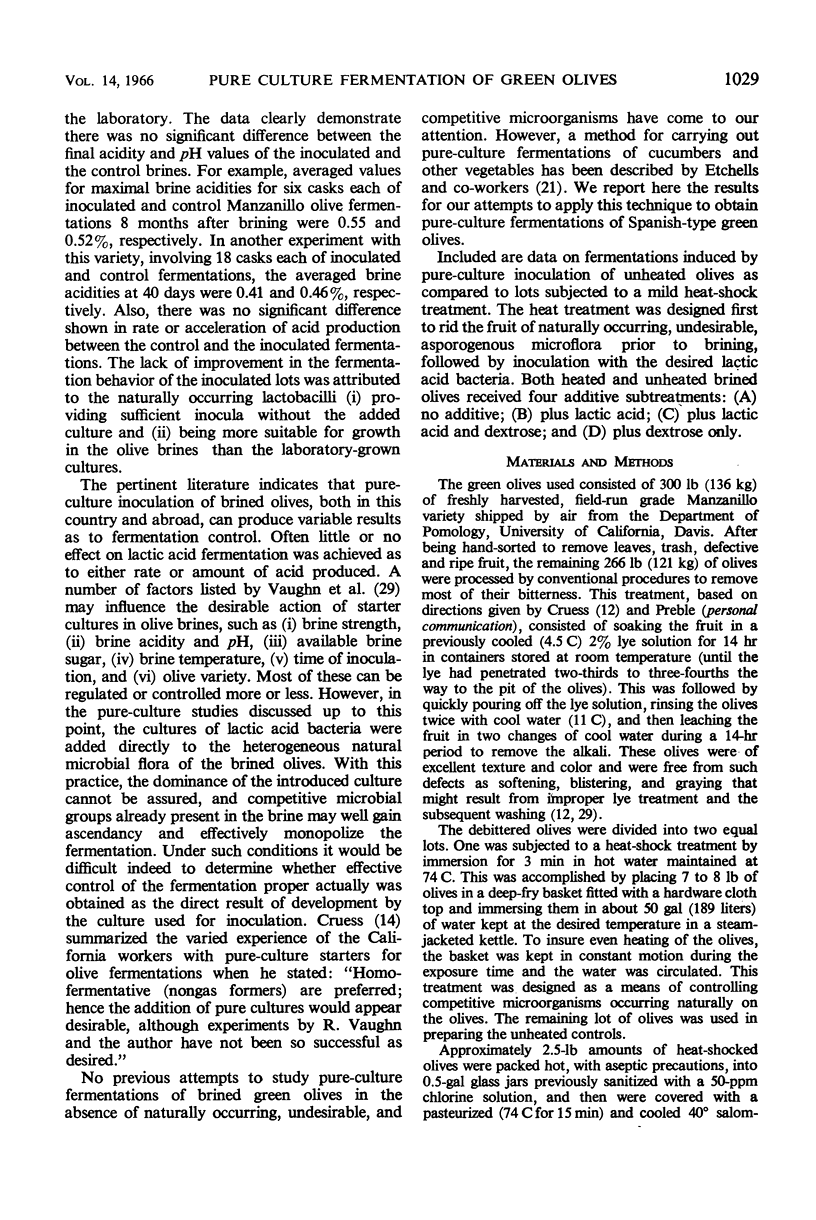
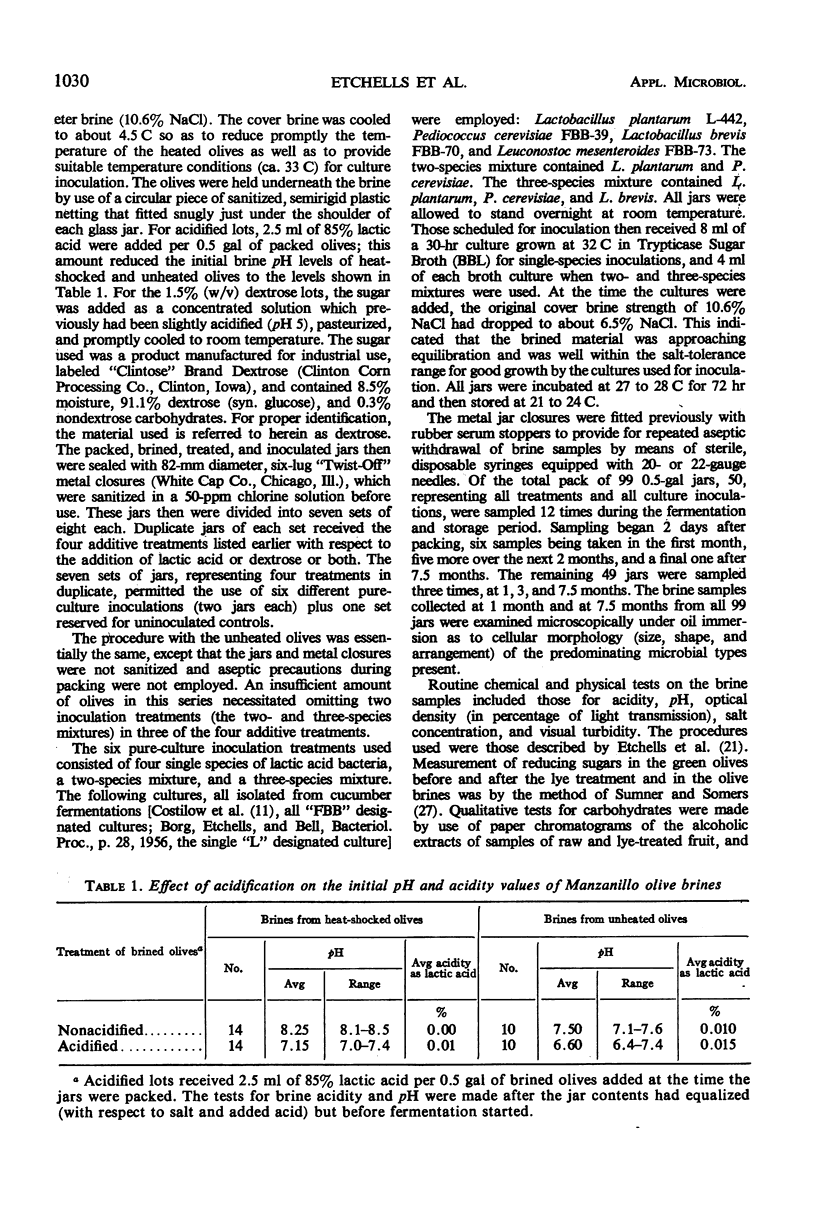
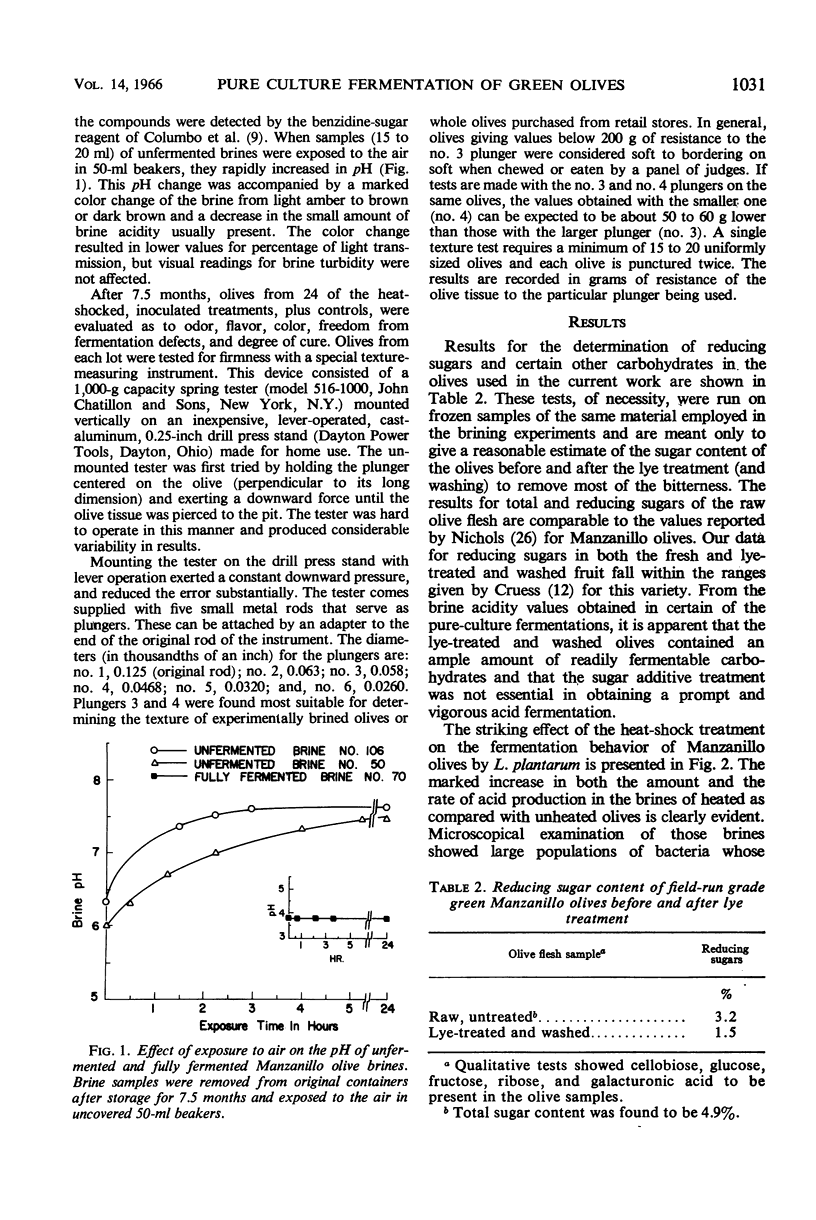
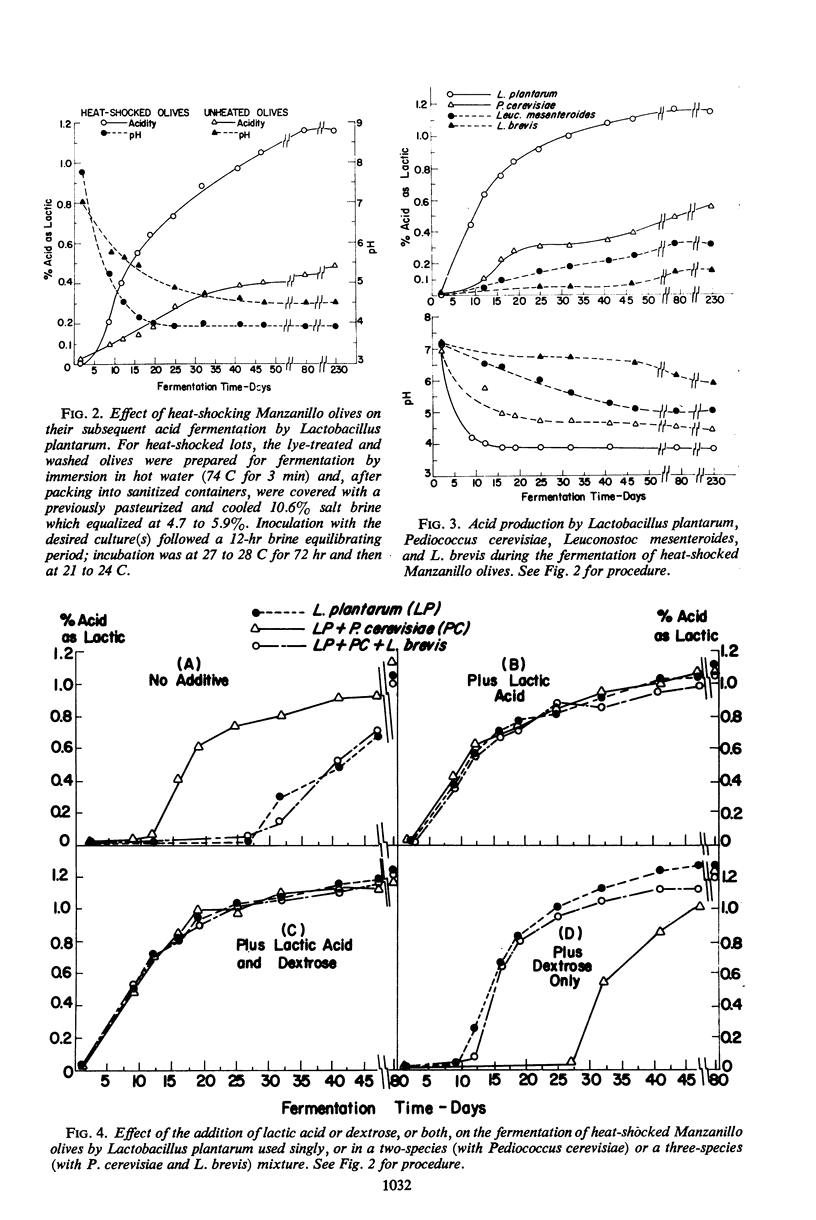
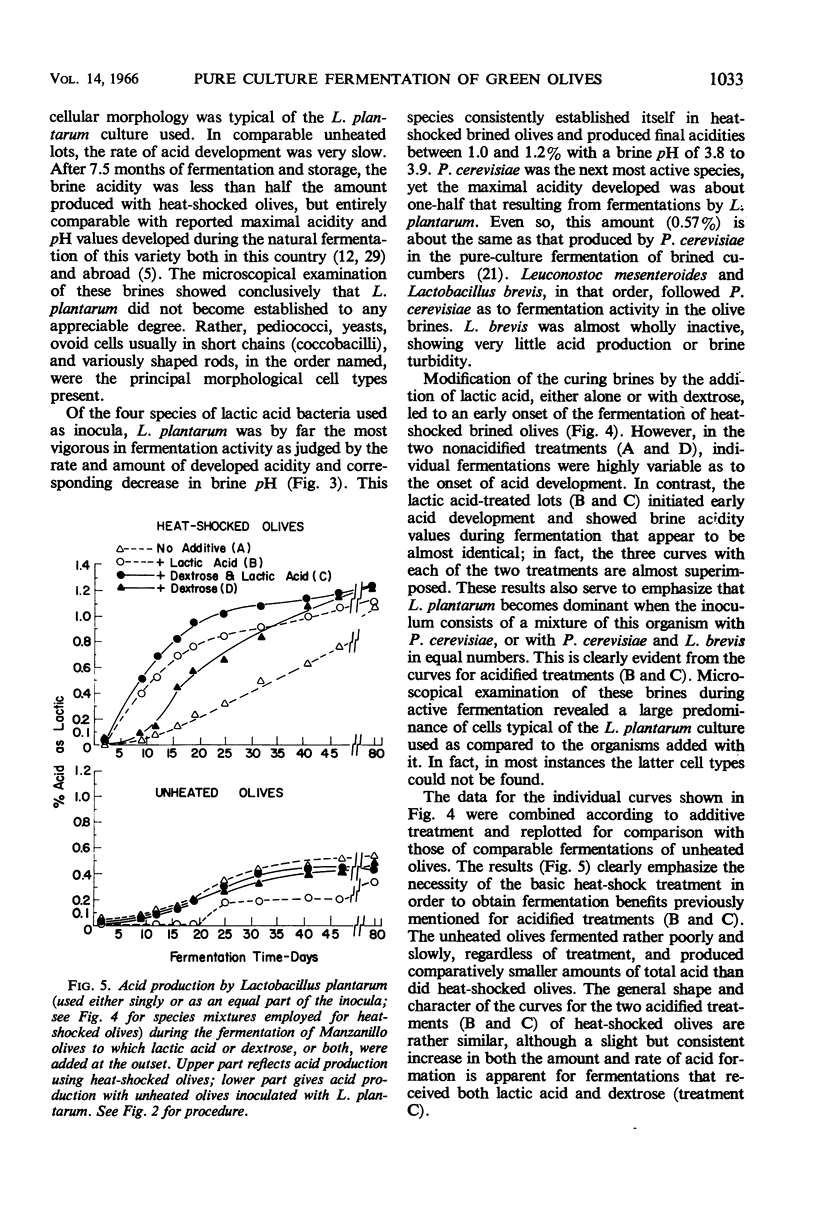
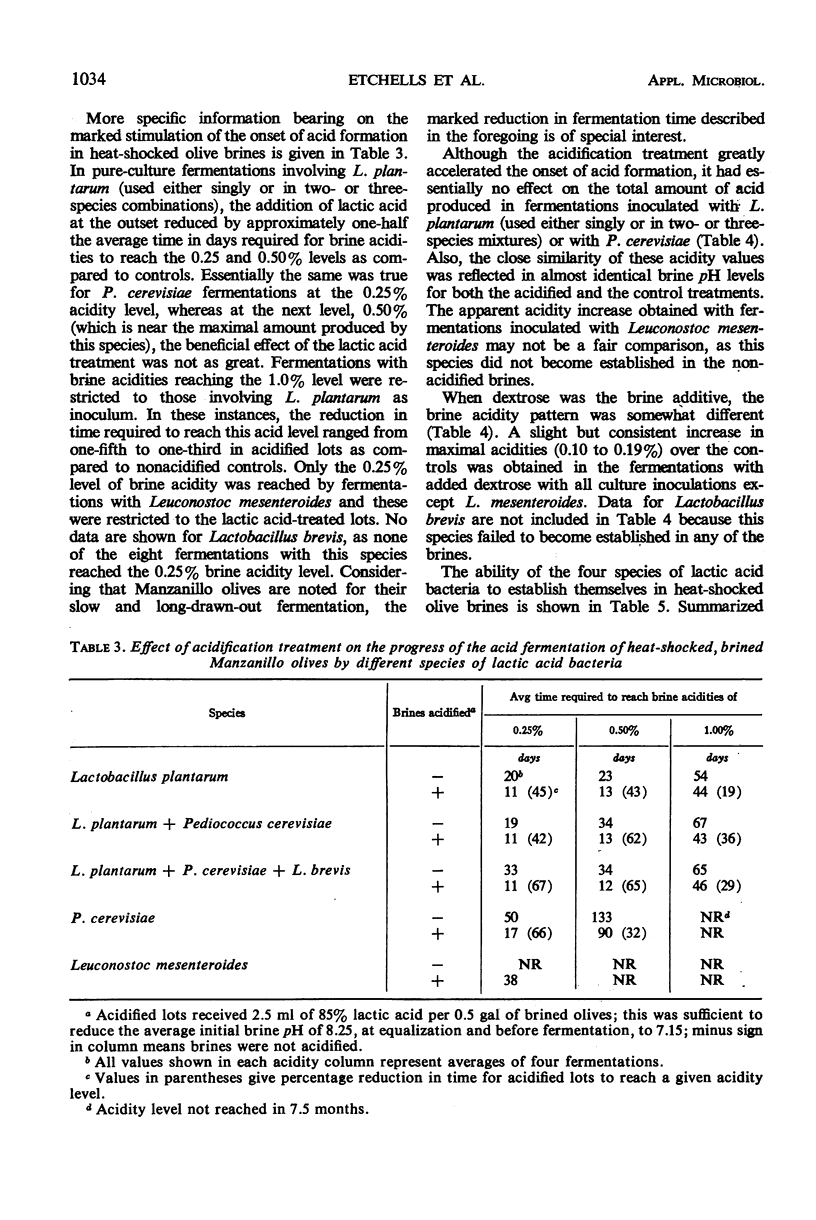
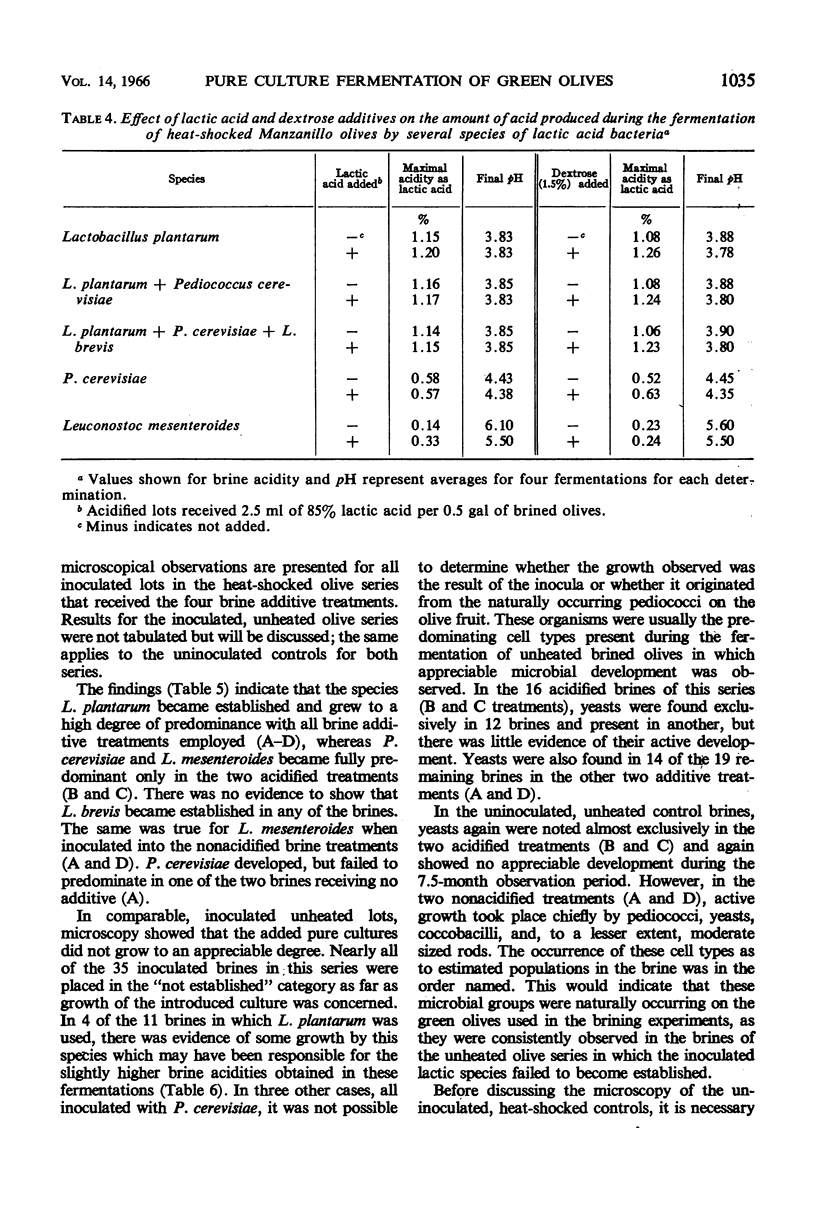
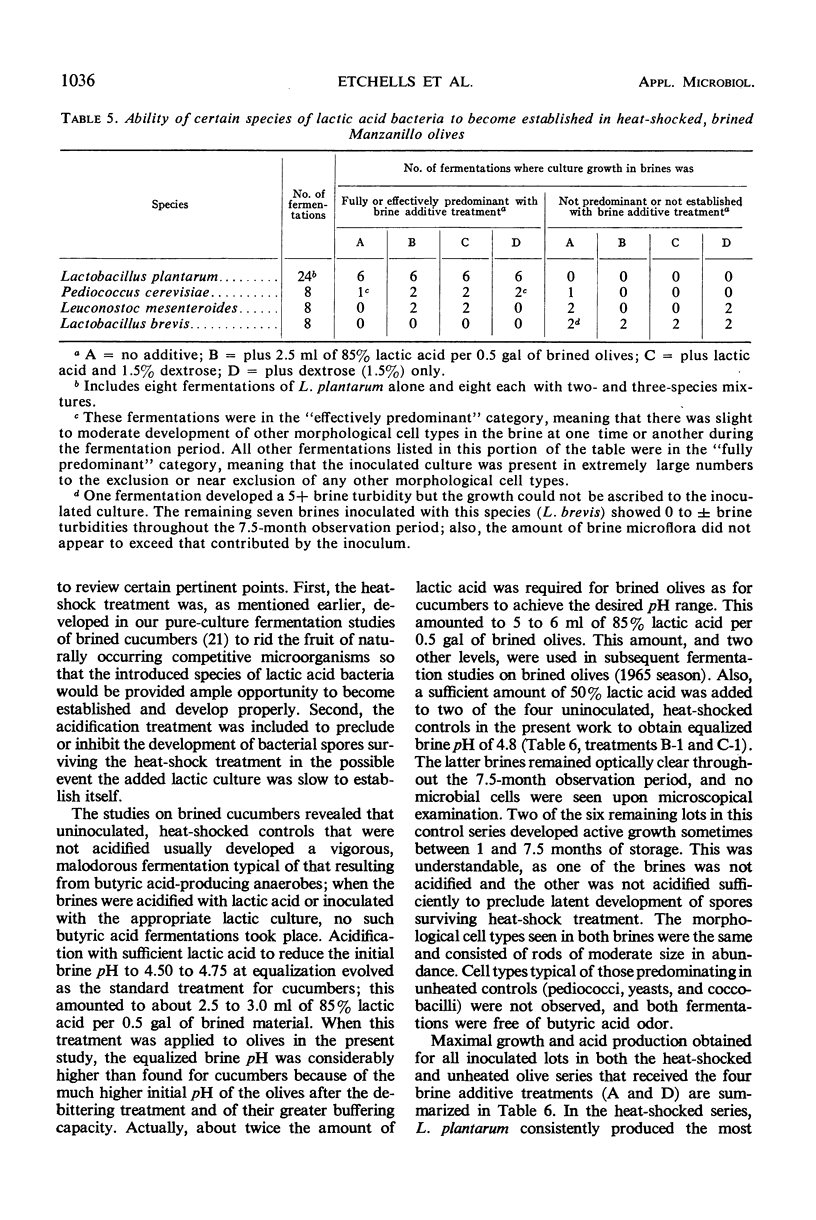
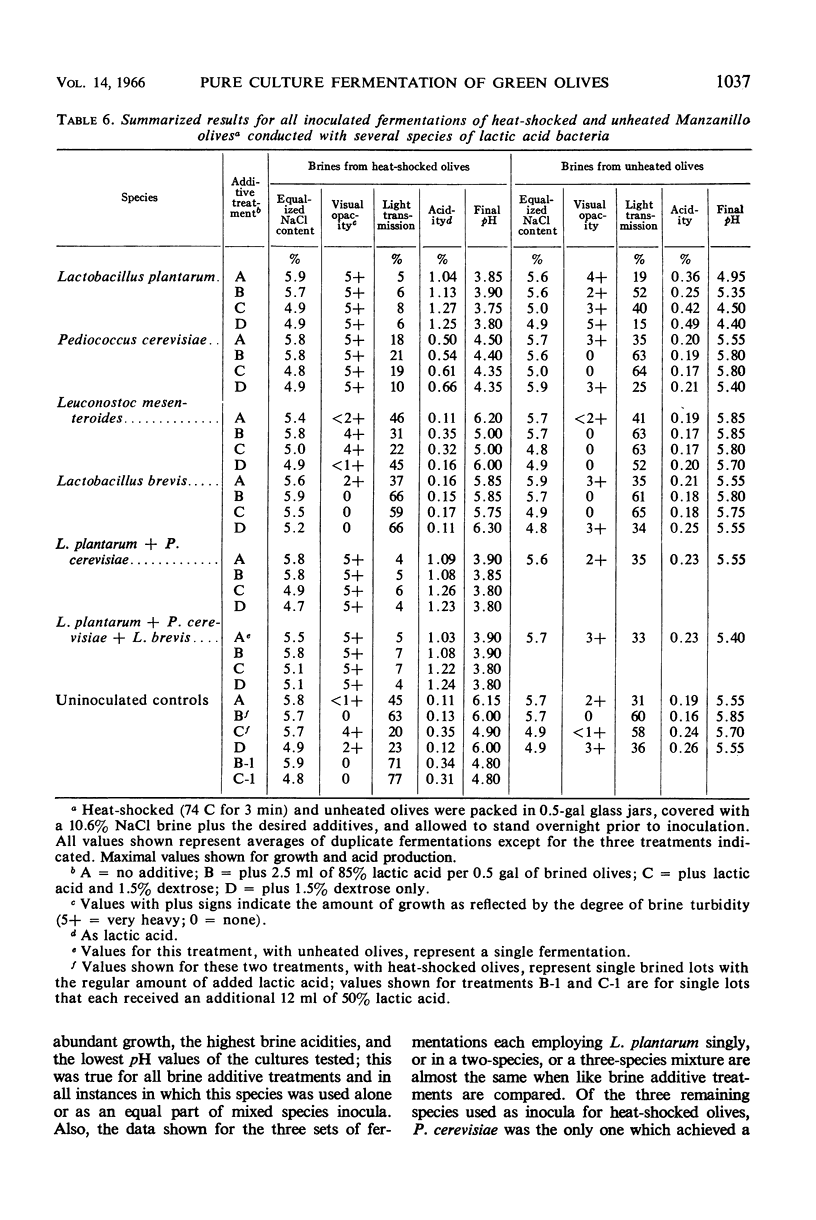
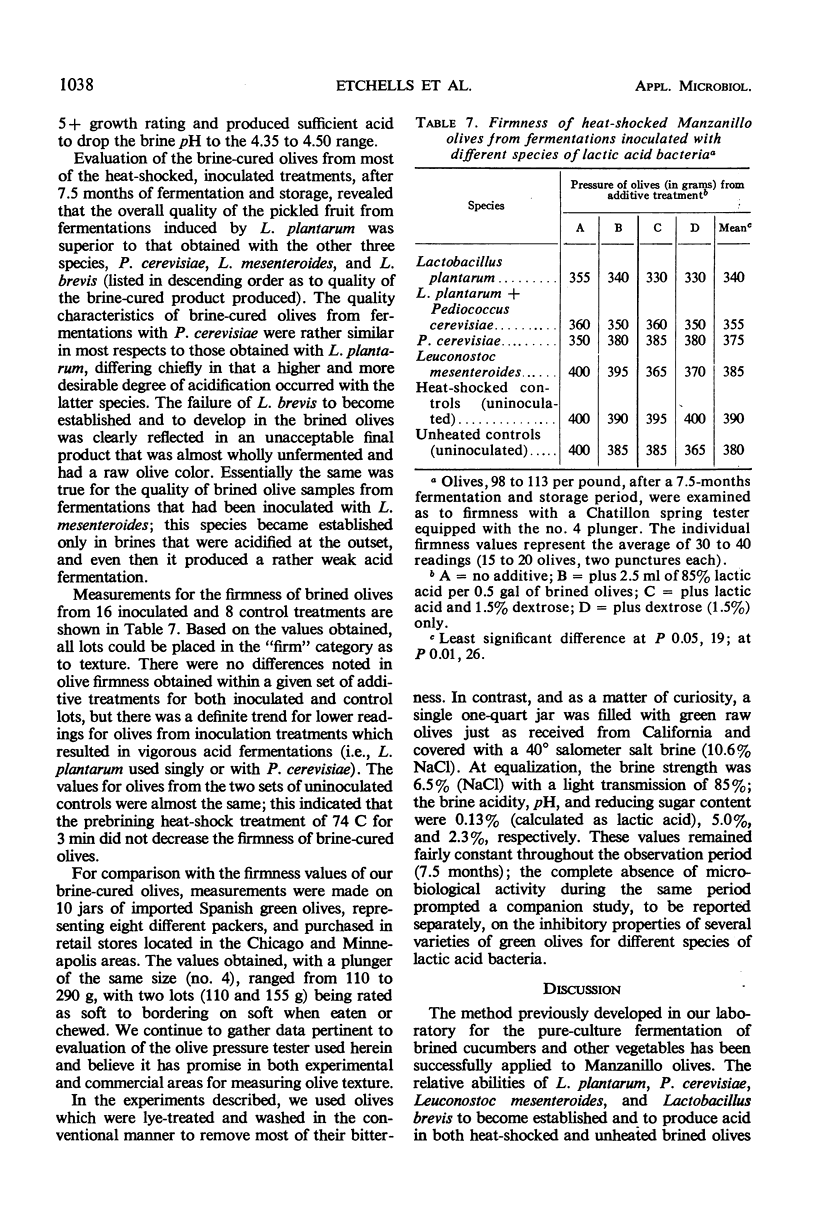
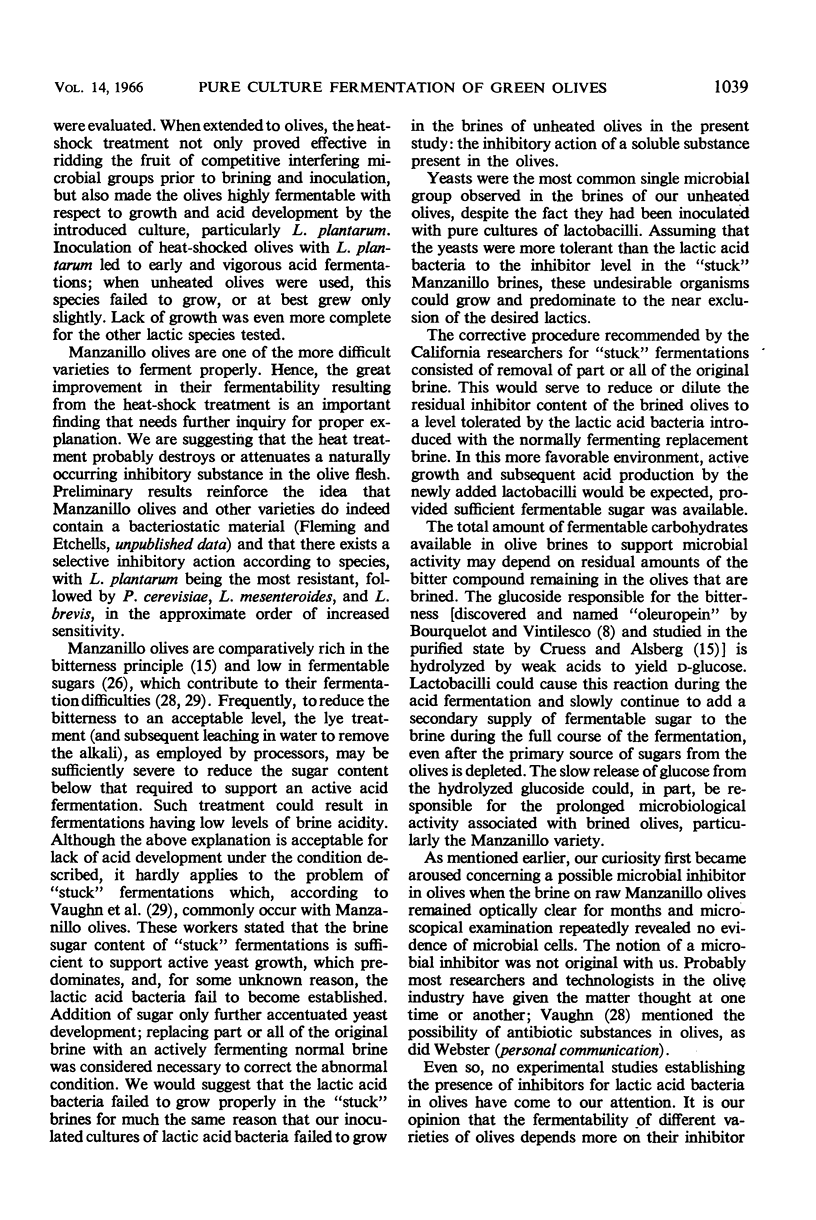
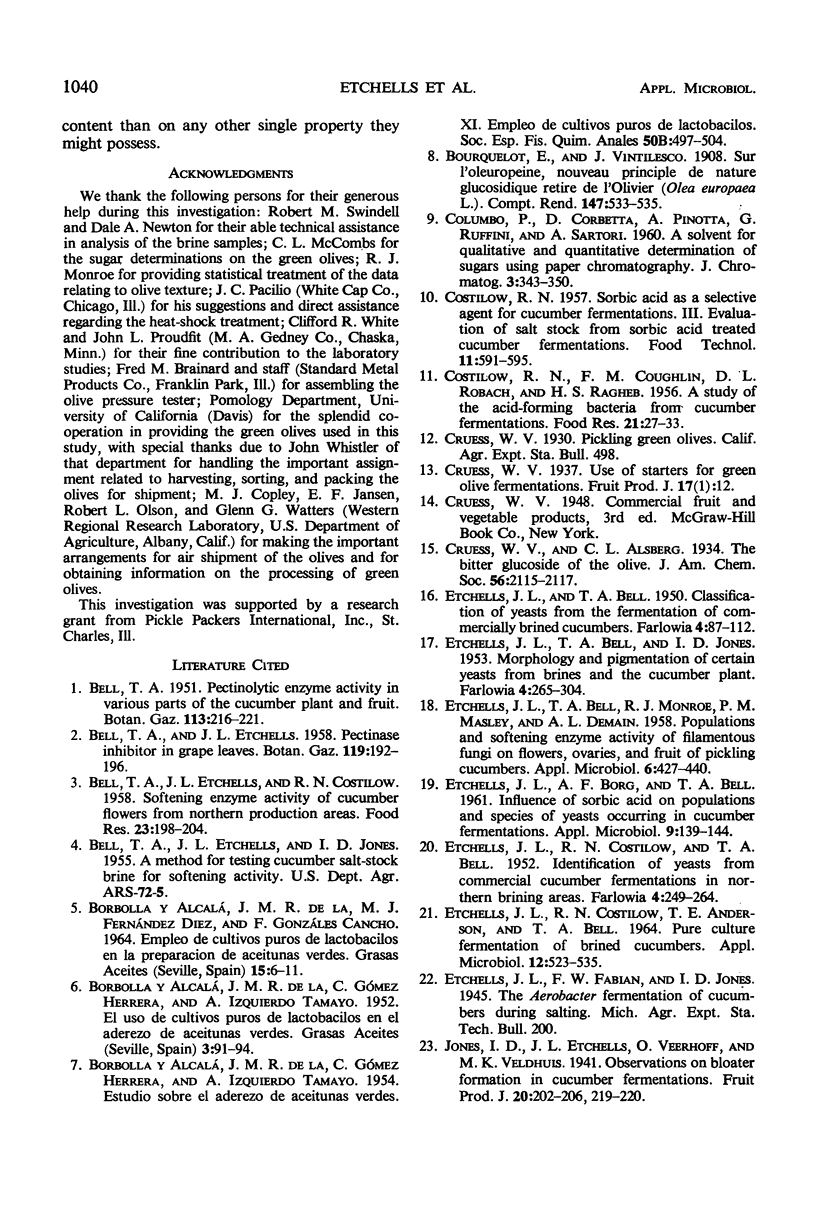

Selected References
These references are in PubMed. This may not be the complete list of references from this article.
- ETCHELLS J. L., BELL T. A., MONROE R. J., MASLEY P. M., DEMAIN A. L. Populations and softening enzyme activity of filamentous fungi on flowers, ovaries, and fruit of pickling cucumbers. Appl Microbiol. 1958 Nov;6(6):427–440. doi: 10.1128/am.6.6.427-440.1958. [DOI] [PMC free article] [PubMed] [Google Scholar]
- ETCHELLS J. L., BORG A. F., BELL T. A. Influence of sorbic acid on populations and species of yeasts occurring in cucumber fermentations. Appl Microbiol. 1961 Mar;9:139–144. doi: 10.1128/am.9.2.139-144.1961. [DOI] [PMC free article] [PubMed] [Google Scholar]
- Etchells J. L., Costilow R. N., Anderson T. E., Bell T. A. Pure Culture Fermentation of Brined Cucumbers. Appl Microbiol. 1964 Nov;12(6):523–535. doi: 10.1128/am.12.6.523-535.1964. [DOI] [PMC free article] [PubMed] [Google Scholar]


